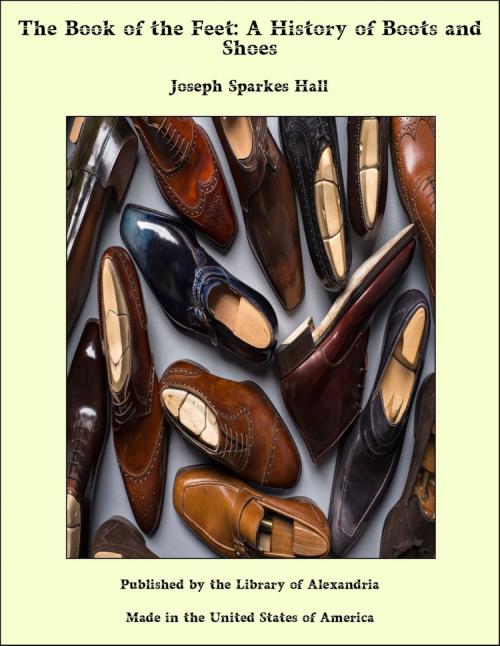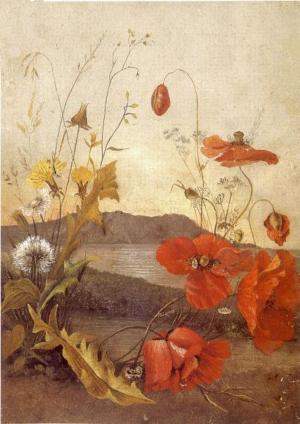The Book of the Feet: A History of Boots and Shoes
Nonfiction, Religion & Spirituality, New Age, History, Fiction & Literature| Author: | Joseph Sparkes Hall | ISBN: | 9781465619730 |
| Publisher: | Library of Alexandria | Publication: | March 8, 2015 |
| Imprint: | Language: | English |
| Author: | Joseph Sparkes Hall |
| ISBN: | 9781465619730 |
| Publisher: | Library of Alexandria |
| Publication: | March 8, 2015 |
| Imprint: | |
| Language: | English |
IF we investigate the monuments of the remotest nations of antiquity, we shall find that the earliest form of protection for the feet, partook of the nature of sandals. The most ancient representations we possess of scenes in ordinary life, are the sculptures and paintings of early Egypt, and these the investigations of travelled scholars from most modern civilized countries have, by their descriptions and delineations, made familiar to us, so that the habits and manners, as well as the costume of this ancient people, have been handed down to the present time, by the work of their own hands, with so vivid a truthfulness, that we feel as conversant with their domestic manners and customs, as with those of any modern nation to which the book of the traveller would introduce us. Not only do their pictured relics remain to give us an insight into their mode of life, but a vast quantity of articles of all kinds, from the tools of the workmen, to the elegant fabrics which once decorated the boudoir of the fair ladies of Memphis and Carnac three thousand years ago, are treasured up in the museums, both public and private, of this and other countries. With these materials, it is in no wise difficult to carry our history of shoemaking back to the earliest times, and even to look upon the shoemaker at his work, in the early days of Thothmes the third, who ascended the throne of Egypt, according to Wilkinson, 1495 years before Christ, and during whose reign, the Exodus of the Israelites occurred. The first of our plates contains a copy of this very curious painting, as it existed upon the walls of Thebes, when the Italian scholar Rossellini copied it for his great work on Egypt. The shoemakers are both seated upon low stools (real specimens of such articles may be seen in the British Museum), and are both busily employed, in the formation of the sandals then usually worn in Egypt, the first workman is piercing with his awl the leather thong, at the side of the sole, through which the straps were passed, which secured the sandal to the foot; before him is a low sloping bench, one end of which rests upon the ground; his fellow-workman is equally busy, sewing a shoe, and tightening the thong with his teeth, a primitive mode of working which is occasionally indulged in at the present day.
IF we investigate the monuments of the remotest nations of antiquity, we shall find that the earliest form of protection for the feet, partook of the nature of sandals. The most ancient representations we possess of scenes in ordinary life, are the sculptures and paintings of early Egypt, and these the investigations of travelled scholars from most modern civilized countries have, by their descriptions and delineations, made familiar to us, so that the habits and manners, as well as the costume of this ancient people, have been handed down to the present time, by the work of their own hands, with so vivid a truthfulness, that we feel as conversant with their domestic manners and customs, as with those of any modern nation to which the book of the traveller would introduce us. Not only do their pictured relics remain to give us an insight into their mode of life, but a vast quantity of articles of all kinds, from the tools of the workmen, to the elegant fabrics which once decorated the boudoir of the fair ladies of Memphis and Carnac three thousand years ago, are treasured up in the museums, both public and private, of this and other countries. With these materials, it is in no wise difficult to carry our history of shoemaking back to the earliest times, and even to look upon the shoemaker at his work, in the early days of Thothmes the third, who ascended the throne of Egypt, according to Wilkinson, 1495 years before Christ, and during whose reign, the Exodus of the Israelites occurred. The first of our plates contains a copy of this very curious painting, as it existed upon the walls of Thebes, when the Italian scholar Rossellini copied it for his great work on Egypt. The shoemakers are both seated upon low stools (real specimens of such articles may be seen in the British Museum), and are both busily employed, in the formation of the sandals then usually worn in Egypt, the first workman is piercing with his awl the leather thong, at the side of the sole, through which the straps were passed, which secured the sandal to the foot; before him is a low sloping bench, one end of which rests upon the ground; his fellow-workman is equally busy, sewing a shoe, and tightening the thong with his teeth, a primitive mode of working which is occasionally indulged in at the present day.















